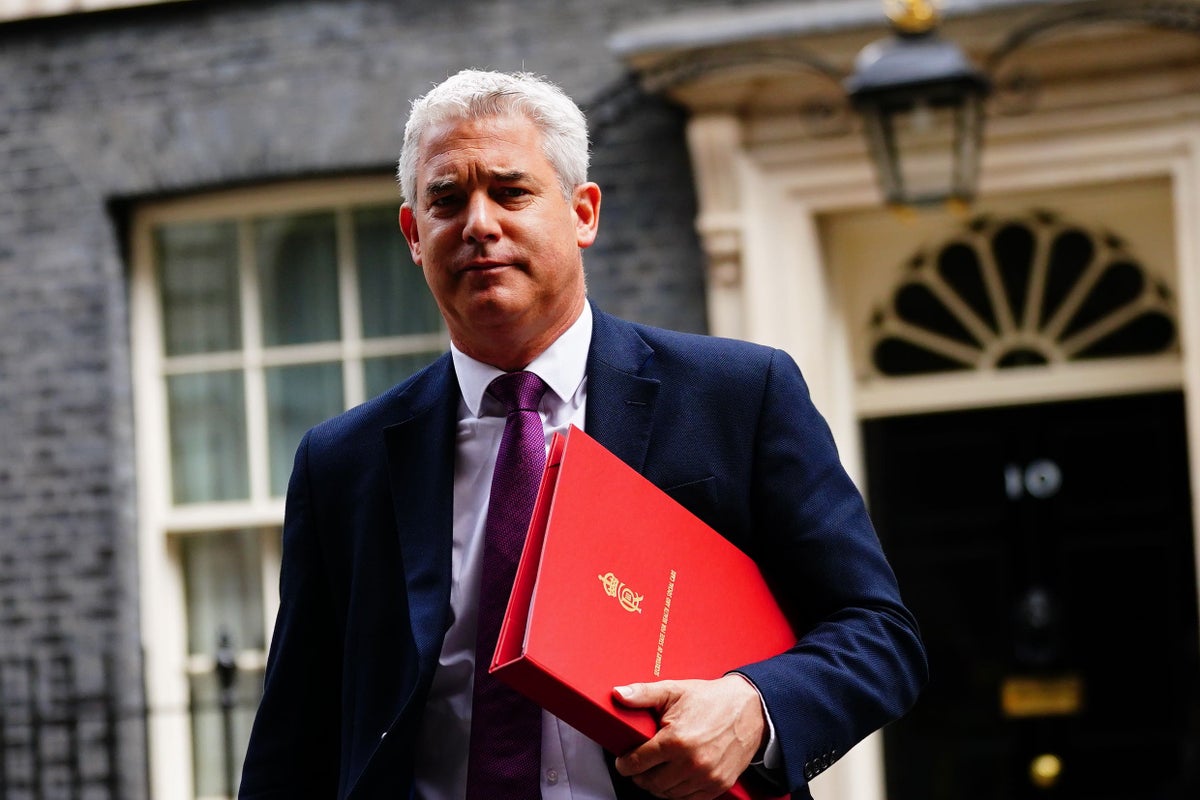
The Government’s plan to overhaul NHS staffing is “the most radical modernisation and reform of the workforce since the NHS was founded in 1948”, according to Health Secretary Steve Barclay.
More than 300,000 extra nurses, doctors and other health workers are expected to be employed in the NHS in England under the plans to be unveiled by Prime Minister Rishi Sunak on Friday.
Writing in the Daily Telegraph, Mr Barclay described the scheme as “the first time any government has ever published a comprehensive workforce plan of this nature”.
He said £2.4 billion of funding over five years would tackle pressures by training new people, retaining existing staff and “embracing the very latest technological innovations” including artificial intelligence, speech recognition, robotic process automation and remote monitoring.
“This represents a sea change on how we train, retain and reform the workforce,” he wrote.
“As we celebrate 75 years of the National Health Service, it will help secure its future and ensure we deliver on our commitment to cut waiting lists.”
He said the workforce gap could grow to 360,000 staff by 2037 without action and “we need more staff to keep pace with demand… and ensure that the public benefits from the best possible care for another 75 years”.
“This represents a significant, long-term investment from the Government to deliver the most radical modernisation and reform of the workforce since the NHS was founded in 1948,” he wrote.
Among the parts of the plan he pinpoints are doubling undergraduate medical places to 15,000 a year, creating new medical schools, increasing training places for GPs, dentists, nurses and midwives and increasing the number of clinical staff training through apprenticeships.
This plan presents a historic opportunity to do things differently to help ease pressures on staff— Health Secretary Steve Barclay
He also stressed the need to retain the “invaluable skills and experience” of existing staff.
“The plan includes measures to improve culture, leadership and wellbeing to see far fewer staff leave the NHS over the next 15 years,” he wrote, pointing to plans to improve occupational health services, more flexible working, pension reforms and an expansion of free and subsidised childcare.
He described the plan as “vital to the future culture and leadership of the NHS, which will improve staff experience and re-emphasise how much they are valued”.
“This plan presents a historic opportunity to do things differently to help ease pressures on staff and increase capacity so they can spend more time with patients,” he said.
Meanwhile Mr Barclay said the plan is about getting “care to patients quicker”.
He told Sky News: “It is a hugely important day for the NHS. It is something that many in the NHS have been asking for, for a long time, to have a long-term workforce plan.
“It is the biggest ever expansion in workforce training in the NHS’s history. It is backed up by £2.4 billion of additional funding over the next five years.
“And what it will do is train more staff, more doctors, more nurses, more midwives, but also give more opportunities to the staff within the NHS in terms of apprenticeships, developing more skills, their continual professional development.
“And it will also look at how we reform some of our training, making that more efficient so that we can get care to patients quicker.
“We recognise from the pandemic that there are big waiting lists, we’ve got a plan to clear those but in terms of the longer-term position of the NHS, we also need to boost our domestic training, and that is what the plan today sets out, that long-term vision for the NHS.”







